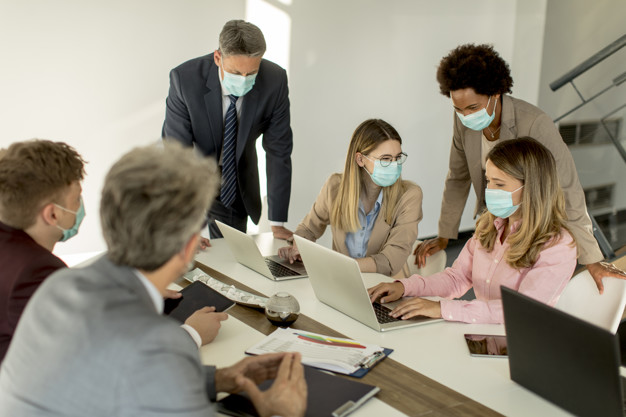Step 2 – Conducting Covid-19 specific Risk Assessments
As the lockdown eases and companies slowly resume work, it is important to conduct a thorough review of your organization’s Health and Safety procedures and update them as needed to protect returning staff from the threats posed by COVID-19.
In this post, we will touch on how you can practically implement a COVID-19 Risk Assessment process for your organization.
In every organization, it is the duty of the HSE Manager or the person charged with managing Health & Safety to identify hazards and ensure compliance with government guidance.
As we are starting to return following the lockdown you must answer the question: Is your organisation ready for the changes required to STAY SAFE? In this post, we will touch on how you can practically implement a COVID-19 Risk Assessment process for your organization.
In our previous Blog, we looked at:
Classifying the Risk to Workers, How the Virus Spreads, Identifying Potential Risks and Sources of Exposure, Low to Very High Exposure Risk, Job Duties Affecting Workers’ Exposure Risk Levels.
Now we will move on and look at how you can practically implement your Covid 19 Risk Assessment process.
Prepare your Risk Assessment Template
Decide on the Risk Assessment template that you want to use and ensure that you have all the appropriate headings within there – Hazard, Who can be affected, How, Current control measures, Likelihood, Severity, Risk Rating, Recommended measures/actions, Likelihood, Severity, Reduced risk rating.
Decide on your Methodology
What factors are you going to consider? Some thoughts to get you started are listed below:
- What is the age of each of your employees (the older the employee the higher the likelihood of infection and the severity of infection)
- What is their general health condition?/Any existing medical issues?
- What type of residency do they live in? ie Family, alone or shared with non family members
- What is their means of commuting to the office i.e., private car, public transportation, or shared car
- What is the means of entry to the office i.e., Is there shared access into the building? Biometric scanners in the buildings office or main entrance?
- What is your current office layout?
- Is there any visitor/waiting area?
- Are there any shared facilities made available to the workers such as kettle, microwave etc.?
- Are there any common areas within the building i.e., elevators, pantries or washrooms?
The answers to these questions will provide insight into which practical measures need to be put in place to ensure staff safety.
If you have one, speak with your building Facilities Management company
What measures are they taking to manage Covid-19 risk in the building ? What disinfection programme is being undertaken in the communal areas?
Practical Measures to Take
If you have been tasked with the Health & Safety function within your company, then practical measures that you could utilize include the following:
- Provide face masks & hand sanitizers at the office entrance
- Ensuring the minimum 2m physical distance between persons inside the office
- Ensure that a robust office cleaning programme is being undertaken
- Check that all employee contact information is up to date
- Buy a thermo scan to regularly monitor staff temperatures
- Collect further details by ensuring that each employee fills in a COVID-19 declaration form
- Further ensure physical distancing by limiting the number of staff working from the office at any one time.
Staff Awareness
To keep workers informed about the hazards of COVID-19, display posters with relevant information, and organize awareness workshops.
What will you do if a staff member gets infected with Covid-19?
Detail a response plan that you will follow in the event that a staff member suspects that they either have Covid-19 or, have had close contact with a person with COVID-19.
- How will you decide when they are fit to return to work?
- Who will be their point of contact within the company?
- What information will you communicate to other employees?
Until you’ve conducted a thorough risk assessment, implemented measures to keep workers safe, and created a robust plan to tackle any infections, your organization is not ready to resume work. If you require professional help to do any of the above, please visit corporateohs.com or send an email to enquiries@corporateohs.com.

